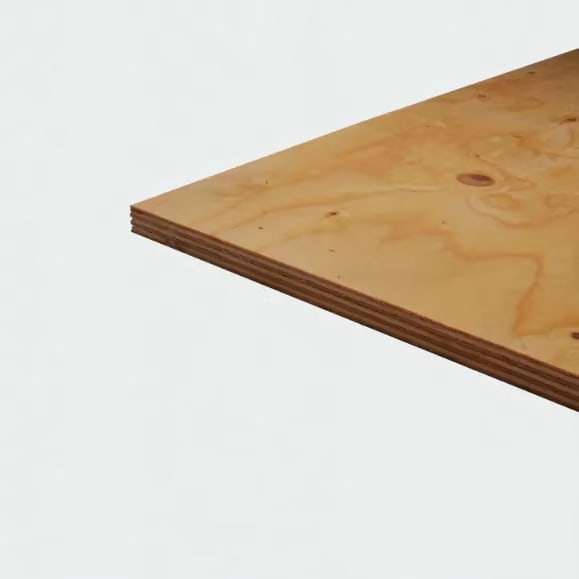Fire Retardant Plywood
(5 Products)Fire retardant plywood is a specialist type of plywood that has been chemically treated with a fire retardant solution using high-pressure impregnation, followed by kiln drying to achieve a specific moisture content. This process ensures that when FRT plywood comes into contact with fire the material is unable to oxidise and will simply char upon exposure as opposed to burning. Consequently, it serves as an effective barrier against the surface spread of flames.
What Is Fire Rated Plywood?
Fire Rated Plywood is a hardwood plywood that has been chemically treated and soaked in a special fire retardant liquid solution. This method of treatment is more reliable and long-lasting than surface coatings.
Boasting fire retardant properties, FR plywood is fireproofed making it flame retardant to either Euro class B or C.
Suitable for structural use, Fire Rated Plywood carries a full CE Mark for use in humid structural applications (EN 636-2), another certification that further testifies the product's durability.
Where Is Fire Rated Plywood Used?
- Framing
- Stairwells
- Trusses
- Roof panels
- Sidewall sheathing
- Wall assemblies
- Joinery
Fire Rated Plywood Key Features
- Fire Resistance: Our plywood is rigorously tested and certified to resist the spread of flames and smoke, ensuring occupants have valuable time for evacuation during a fire.
- Durability: Constructed from high-quality wood and engineered to withstand fire exposure, our fire-rated plywood maintains its structural integrity even in the face of intense heat.
- Versatility: Suitable for a wide range of applications, including wall assemblies, fire-rated doors, roof decking, flooring, and structural protection, our plywood offers versatility and peace of mind.
- Code Compliance: Our product complies with local building codes and regulations, making it an ideal choice for commercial and residential projects alike.
Fire Rated Plywood Benefits
- Flame retardant treatment improves fire resistance without compromising the plywood's technical performance
- Inhibits fire growth by slowing down lateral flame spread
- FR plywood panel products that meet the appropriate BS EN standards are able to reduce flammability and limit smoke production
- Slows rate of fire growth
Frequently Asked Fire Retardant Plywood Questions
How Does The FR Treatment of Fire Rated Plywood Work?
The fire retardant treatment used in the manufacturing process makes the wood more resistant to fire and flame spread, which can help slow or prevent a fire from spreading.
The chemicals used in FR plywood creation help to reduce the panel's reaction to fire, limiting total heat release and smoke production emissions.
What Should Be Taken Into Consideration When Buying Fire Retardant Plywood?
Before beginning any project, checking the product specs and certifications is key, especially when working with fire-retardant sheet materials.
When fire safety really has to count, fire-rated plywood can make a huge difference to the survival chances of those inside when the fire breaks out. It won't completely fireproof your house but it will gain vital minutes for those inside to escape.
When purchasing fire-resistant plywood, ensure that you check it for:
- Product name and species
- The flameproof abilities of the material
- The method by which the material was dried
- Flame spread specifications
- Smoke developed number
Is FR Plywood Still Fire Retardant After Cutting?
Yes, the treatment method used to manufacture FR plywood is more durable than surface coatings - the fire retardant properties will remain after cutting or machining.
What Is The Single Burning Item Test?
The SBI test is used to classify building products in accordance with BS EN 13501 1.
The test determines the material's behaviour in a fire, including ignitability, heat release, and its production of burning droplets. If the product meets European classifications after testing, it is given a European class.





